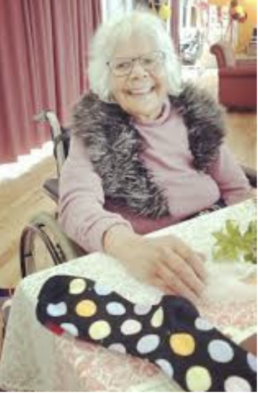These life stories may contain descriptions of childhood trauma and abuse, as well as images, voices and names of people now deceased. If you need help, you can find contact details for some relevant support services on our support page.
Aboriginal Australian writer and member of the Stolen Generations, Doris Kartinyeri (1945-2020), was in residential care as a child.
Doris Kartinyeri, a Ngarrindjeri woman and younger sister of Doreen Kartineri, was born at the Raukkan Community Hospital in South Australia to Thelma and Oscar Kartinyeri. Thelma died a month after giving birth to Doris and one-month old Doris was removed from the Murray Bridge Hospital and taken to live in Colebrook Home. Colebrook Home was initially based at Quorn, a small town in the Flinders Ranges, approximately 292 km north of Adelaide. It was run by the United Aborigines Mission, beginning in 1927. The Home moved to suburban Adelaide in 1944.
Doris was initially happy at Colebrook, but later resented the imposition of religious practices, such as spending Sundays going to church and reading the bible. She was sexually abused by staff members.
Doris was removed from Colebrook at the age of fourteen and taken to live with a white family. Because she was struggling at school, the couple decided it would be better if she did housework instead.
My duties were to look after the four kids, prepare meals and general housekeeping… I worked here for cheap labour as a domestic. No money was ever exchanged (Kartinyeri, 60).
In her next placement she was sexually abused by a clergyman.
I felt these terrible experiences had ruined my life. I had lost all my dignity, self respect and, most importantly, my identity and sanity…At this house, I was deprived of the normal happiness and bonding with other teenagers…I really had no dreams or plans in life. The saddest thing is that I really didn’t have a mum or family to guide me (Kartinyeri, 62, 63).
In her memoir, Kick the Tin (2000) and in her later work, Bipolar Express (2017), Kartinyeri talks about the impact on her wellbeing of the removal from her family and culture, the harsh religiosity of Colebrook, and the sexual abuse while at Colebrook and by the minister.
In 1994, Doris Kartinyeri joined in creating the Blackwood Reconciliation Group and the Colebrook Tji Tji Tjuta and the group established the Colebrook Blackwood Reconciliation Park where Colebrook once stood, with memorials created in 1998 (Fountain of Tears) and 1999 (Grieving Mother).
Doris Kartinyeri published a children’s book in 2003, Bush Games and Knucklesbones, which honours friendships between the children in Colebrook.
The grounds were huge and lots of trees and bushes. We were all gifted children and my brothers and sisters, we played many games. We played in the natural surroundings on rainy days and sunny days (Haxton).
Doris Kartinyeri was recognised with a Lifetime Achievement Award at the South Australian NAIDOC Awards in 2017.
References:
“Colebrook Blackwood Reconciliation Park (Fountain of Tears).” Monument Australia. https://monumentaustralia.org.au/themes/culture/indigenous/display/50688-colebrook-blackwood-reconciliation-park-fountain-of-tears-
“Colebrook Home (1927-1981).” Find and Connect. https://www.findandconnect.gov.au/guide/sa/SE00138
Haxton, Nance. “Stolen Generations member Doris Kartinyeri releases children’s book.” The World Today. ABC, 20 November, 2003. https://www.abc.net.au/worldtoday/content/2003/s993856.htm
Kartinyeri, Doris. Kick the Tin. Spinifex Press, 2000.
Maxwell, Delia. “Book Review. Kick the Tin: A survivor of the stolen generation kicks back.” Freedom Socialist Party, 2001. https://socialism.com/fsb-article/kick-the-tin-a-survivor-of-the-stolen-generation-kicks-back/
Meher, Prakash Kumar. “Debunking Religious Practices and Assimilation: Reading Doris Kartinyeri’s Kick the Tin”. Indian Journal of Australian Studies, vol. 8, (2015-16): 130-139.
Rorintulus, Olga. “Indigenous Australian Women’s Life Writing: Their Voices to Be Heard.” Journal of International Conference Proceedings, 2020. https://ejournal.aibpm.org/index.php/JICP/article/view/912
Image available here.
